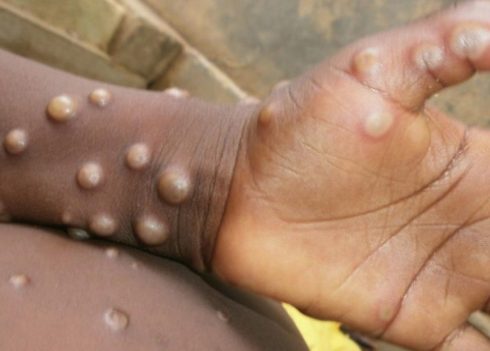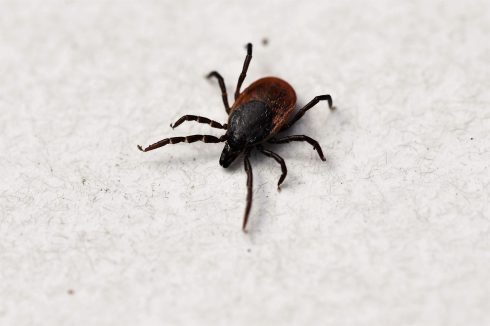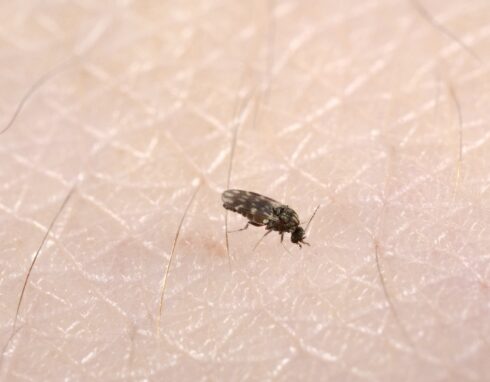IN a risk assessment last week, the European Center for Disease Prevention and Control (ECDC), called the increase of imported Mpox cases from African countries ‘highly likely’, raising alarms at the tail end of a season that’s seen outbreaks of a handful of deadly tropical diseases in Spain.
A new, highly transmissible strain of the mpox virus known as ‘clade I’ has wrought havoc in the Democratic Republic of the Congo, leading the Africa Centres for Disease Control and Prevention (Africa CDC) to declare a ‘public health emergency of continental security,’ although it has so far only been reported outside of Africa in Pakistan and Sweden.
Meanwhile, the West African variant of the virus responsible for Spain’s deadly 2022 outbreak has so far infected 260 people in the country as of August 5, and localised outbreaks of other rare infections like West Nile Virus (WNV), sloth fever, and Crimean Congo Hemorrhagic Fever have caused deaths since late spring.
With its warmer temperatures and proximity to Africa, Spain commonly reports outbreaks of tropical diseases, particularly during the summer months.
In 2022, for example, the West African mpox variant infected 7,521 in Spain, while the West Nile Virus — spread via the native Culex pipiens mosquito — makes a regular appearance each summer, having so far caused 17 cases and two deaths in Andalucia this year.
But experts say the increased movement of people between continents brought by globalisation has played a role in the global spread of tropical diseases, while higher temperatures caused by climate change may affect local transmissibility and duration of the virus’ activity.

Mpox
Mpox, formerly known as Monkeypox, is spread through physical contact with infected animals or people, and can cause fever and a painful rash that usually lasts 2-4 weeks.
Though most people recover, extreme cases of the disease can be fatal.
In 2024, 17,541 cases and 517 deaths have been reported as of August 13, according to the Africa CDC, 96% of which were recorded in the Democratic Republic of the Congo.
The organisation has reported that the virus is likely being spread through heterosexual sex workers in the DRC.
On August 14, World Health Organisation Director-General Tedros Adhanom Ghebreyesus declared the DRC mpox outbreak a ‘public health emergency of international concern.’
“The emergence of a new clade of mpox, its rapid spread in eastern DRC, and the reporting of cases in several neighbouring countries are very worrying,” he said.
But despite the hundreds of mpox cases in Spain this year, the new variant has yet to be detected in Spanish territory, and public health experts assert there’s no reason to panic.
“Right now, the numbers are quite low compared to the 2022 outbreak,” Dr Jacob Lorenzo-Morales, director of the Institute for Tropical Diseases and Public Health at the University of La Laguna, told The Olive Press.
“Additionally, we have previous experience and the most at-risk groups in the country have been vaccinated or are in the process of receiving their second dose, so it’s a totally different scenario,” he continued.
University of Salamanca microbiology professor Juan Luis Muñoz added that most mpox cases in Europe have resulted from sexual contact, and emphasised that the most effective manner of prevention is immediately seeing a doctor if one finds any strange lesions, and to engage in safe sex practices.
“There is no a specific number of cases indicating that the infection is getting out of control, but in any case, in our environment, we are still far from worrying figures,” Muñoz said.

West Nile Virus, CCHF
As for West Nile Virus, the mosquito-borne disease whose corresponding sickness — West Nile Fever — can cause headaches, nausea, rashes and death in extreme cases, has circulated locally throughout Europe this summer, with cases reported in Greece, Italy, Austria, Hungary, Serbia, and Romania in addition to Spain, totaling 69 cases by July 31, according to the ECDC.
These numbers are normal and are no cause for alarm, the organisation wrote in its release.
Another rare, locally transmitted disease that’s made an appearance in Spain this year is Crimean Congo Hemorrhagic Fever (CCHF), a deadly, tick-borne illness with a 10-40% fatality rate.
The virus has killed two elderly men, the first of whom — who died on May 1 — likely contracted the disease while hiking in the Arribes del Duero National Park in Salamanca, according to the ECDC.
The second case was contracted in the Toledo province, and health authorities were notified on July 21.
According to Muñoz, there may be a relationship between higher year-round temperatures brought by climate change and the emergence of these rare, insect-borne diseases.
“Higher temperatures, and above all milder winters, facilitate the survival of disease-transmitting vectors that in the climatic conditions of 40-50 years ago would not have survived the winter,” he said.
Additionally, other factors may play a role in their increased prevalence, he said, like the abandonment of agricultural land leaving more viable tick habitat than in prior years.

A midge fly, one of the main carriers of the Oropouche virus. Source: Wikimedia
Sloth Fever
Meanwhile, reports of imported cases of the deadly Oropouche virus, or “sloth fever” in Europe this summer have also raised concerns.
The virus, spread by biting midge flies and mosquitos, has been circulating in Cuba and Brazil, and was brought to Europe by travellers from those countries.
The ECDC reported 19 European cases in June and July, with 12 reported in Spain, five in Italy and two in Germany.
Symptoms can be easily confused with other tropical viruses like Dengue, and often include fevers, rashes, headaches, and muscle pains, though many carriers experience no symptoms.
The virus is uncommon and largely unknown to researchers, and had previously been thought to be mostly non-lethal, until two healthy young women died from the virus in Brazil this year.
There is a connection between globalisation and the spread of tropical diseases like Oropouche, Morales says.
“In the case of vector-borne diseases, there’s an increase in travel and trade between continents, which allows invasive species to reach new territories,” he told the Olive Press.
Climate change also plays a role, as increasing temperatures worldwide have led to the expansion of tropical zones, and therefore the potential habitat of tropical viruses.
However, he emphasises that the risk of transmission of Oropouche on the European continent is low, as the species of flies that carry the virus do not exist here.
The most recent ECDC report assessed the risk level for European travellers to Latin American countries as moderate.
READ MORE:
- West Nile virus spreads in Spain: Health authorities declare 13 new cases in Sevilla and Huelva – while infected mosquitoes are found in Cadiz
- Monkeypox warning in Spain: Country registers highest number of cases in Europe









